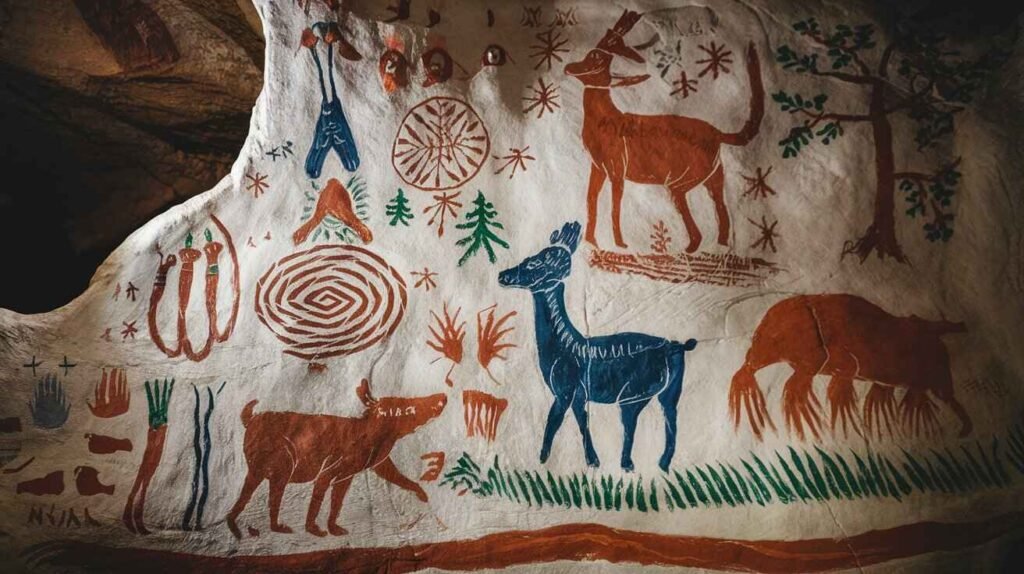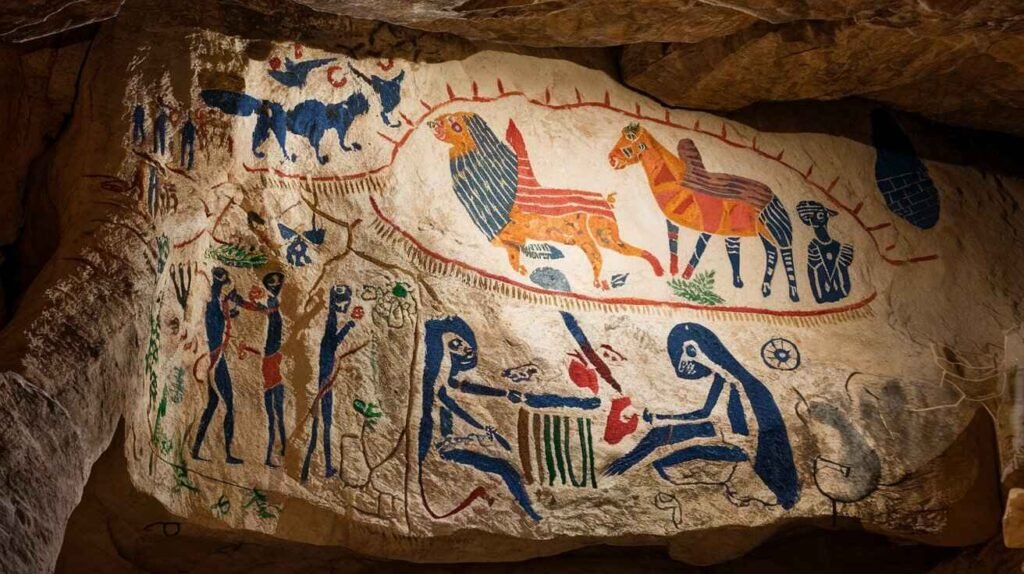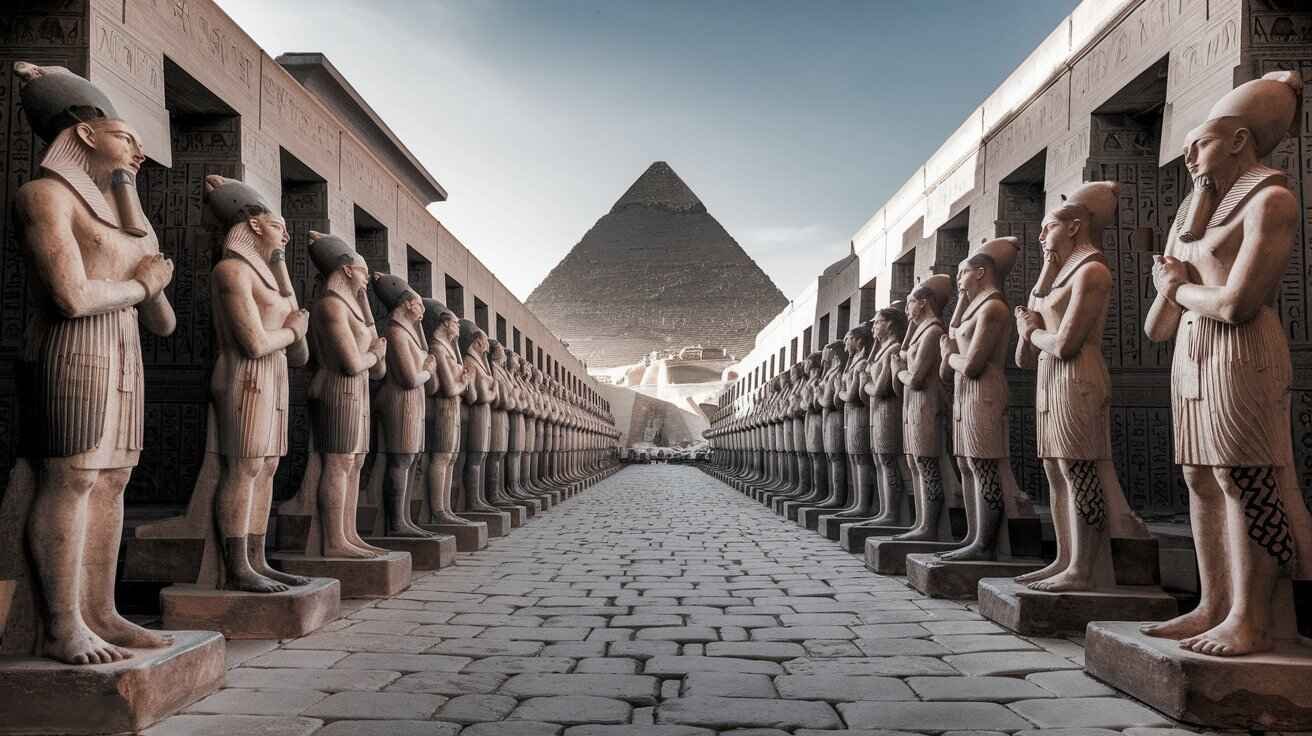Ancient Art isn’t always made of aesthetic beauty; it is an immediate mirrored image of the way of life, faith, and socio-political systems beyond civilizations. The artwork created by way of historical societies provides profound insights into their values, ideals, and technological improvements. In this article, we delve deep into the evolution of historical artwork, from prehistoric cave paintings to the mind-blowing systems and sculptures of Egypt, Greece, and Rome, and how they shaped the trajectory of world creative improvement.
The Birth of Art: Ancient Cave Paintings
Early Artistic Expressions in the Cave
The earliest form of human art is discovered in prehistoric cave paintings. These artworks are positioned in caves, including Lascaux in France and Altamira in Spain, dating back around 40,000 years. The artwork predominantly depicts animals, including bison, horses, and deer, showcasing a deep connection between early people and the creatures they hunted. The primitive but detailed artwork is possibly used for ceremonial purposes, probably associated with searching magic, to make sure a hit hunt, or to invoke safety from supernatural forces. Evidence shows that these historic artists used natural substances like ochre, charcoal, and minerals to create their works, which were carried out using primitive equipment crafted from animal hair and plant fibers.
The Significance of Cave Art
Cave artwork is distant from early depictions of animals; they provide insights into early human cognitive and cultural development. For instance, the use of attitude in some cave artwork, such as the site of animals when it comes to one another, shows complicated information about spatial relationships. Those artworks’ symbolism also points to early human spirituality and the desire to communicate through visible methods. These artworks also played a role in improving oral traditions and passing down information about the environment, survival strategies, and non secular beliefs, making them a vital part of human history and the inspiration of visible storytelling.
Ancient Egyptian Art: Symbolism and Eternity
The Role of Religion in Egyptian Art
Ancient Egyptian art is thought to adhere strictly to symbolic representation, in which each element of an artwork had a deeper meaning, especially regarding religion. Art in Egypt was not meant for personal expression but for spiritual, social, and political purposes. The Egyptians believed in a divine, everlasting afterlife, and their art sought to ensure the immortality of the pharaohs and gods. Statues and paintings had been created to hold the likeness of individuals and deities for eternity. The proportions of figures in Egyptian art have been surprisingly stylized, with the top and legs often depicted in profile. At the same time, the torso becomes proven frontally to preserve an idealized and divine representation.
Iconic Pieces of Egyptian Art
One of the most iconic portions of Egyptian artwork is the bust of Nefertiti, which exemplifies the excessive degree of craftsmanship and splendor that Egyptian artisans finished. With its realistic detail and symmetry, the bust has become a symbol of beauty and electricity. In addition to sculptures, the enormous structures, like the Great Pyramids of Giza, built as tombs for pharaohs, serve as a testimony to the Egyptians’ architectural ingenuity. These pyramids, designed to ensure the smooth journey of the pharaohs into the afterlife, remain as one of the Seven Wonders of the Ancient World, showcasing each inventive and engineering prowess. Egyptian artwork’s strict adherence to style and its symbolic meanings made it one of the most recognizable and enduring forms of ancient artwork.

Greek Art: The Quest for Realism and Perfection
The Classical Period and Its Influence
Greek art, especially at some stage in the Classical length (5th-4th centuries BCE), marked a dramatic departure from the earlier, greater inflexible representations of the human form seen in Egyptian art. Greek artists sought to depict humans now not realistically but as their maximum idealized bureaucracy. The Greeks placed a sturdy emphasis on percentage, symmetry, and balance, with a focal point on the splendor of the human body. This is seen in well-known sculptures, including the Discobolus (The Discus Thrower) and the Doryphoros (Spear Bearer), in which figures are proven in contrapposto, or a relaxed, herbal pose. The Greeks believed that beauty and symmetry were reflections of divine concord, and those beliefs had been embedded in all styles of Greek artwork, from pottery to sculpture and architecture.
Greek Contributions to Art and Architecture
The Greeks also added vast innovations in structure, most notably the improvement of the three classical orders of columns: Doric, Ionic, and Corinthian. These column patterns were used inside the creation of temples, such as the Parthenon, dedicated to the goddess Athena. The Parthenon is an image of Greek success. It is no longer simple in its architectural design but in its artwork, as the frieze and metopes are adorned with mythological battles and divine intervention scenes. Greek architects and sculptors employed ideas of mathematics to make sure that their homes and statues completed the best proportions. This approach has inspired Western artwork and structure for centuries. The legacy of Greek artwork is undeniable, imparting a basis for the Renaissance and cutting-edge Western artwork.
Roman Art: Realism and Propaganda
The Roman Focus on Realism
While Roman art borrowed closely from Greek impacts, it also developed its unique fashion, especially in portraiture. Roman artists centered on creating practical depictions of people, frequently emphasizing age, know-how, and revel. This fashion of realism became a planned preference to spotlight the virtues of Roman citizens, specifically political leaders, who had been depicted with wrinkled faces and unflattering features to deliver their hard-earned awareness. The use of realism in portraiture was additionally a form of political propaganda, as it allowed Roman leaders to appear extra relatable and virtuous to their citizens.
Innovations in Roman Architecture
Roman contributions to architecture had been titanic, with improvements in the use of concrete allowing for the construction of huge, durable systems along with the Colosseum and the Pantheon. The Colosseum, an amphitheater able to seat tens of thousands, became a wonder of engineering and layout, showcasing the Romans’ capacity to construct big-scale public works. With its big concrete dome and progressive use of the area, the Pantheon remains an architectural wonder, influencing the layout of domed buildings throughout history. Roman architecture became not just about functionality; it also became deeply tied to art, with sculptures, frescoes, and mosaics used to enhance and improve the visual reveal of these public spaces.

The Legacy of Ancient Art in Modern Times
The Influence on Renaissance Art
Historic Greece and Rome artwork profoundly influenced the Renaissance Timetion in European records when there was a renewed interest in classical thoughts and aesthetics. Artists such as Leonardo da Vinci, Michelangelo, and Raphael studied historic sculptures and texts, striving to revive the beliefs of symmetry, proportion, and humanism. Michelangelo’s David and Leonardo’s Vitruvian Man are direct nods to classical Greek ideals of the human shape, emphasizing the importance of anatomical precision and stability. Renaissance artists additionally embraced the Greco-Roman idea of “humanism,” which emphasized the potential and dignity of humans. This renewed consciousness of human-focused artwork might have impacted Western art for centuries.
Continuing Influence in Contemporary Art
Ancient artwork continues to encourage contemporary artists, who draw on classical topics, strategies, and imagery in their works. Exploring human shapes, using angles, and examining classical mythology continue to be accepted in current art. Ancient artwork’s impact may be seen in public sculptures, well-known galleries, and even present-day structures, in which classical motifs are frequently included in contemporary designs. For example, using columns in current buildings, the incorporation of marble in sculptures, and the subject matters of heroism and mythology in artwork are all traces of the lasting impact of historical civilizations on cutting-edge subcultures. Today, artists look at and reinterpret historical artwork, making sure of its relevance in the evolving world of visible expression.
Conclusion
The evolution of ancient art offers a window into the cultures and beliefs of early civilizations. From the spiritual symbolism of Egyptian artwork to the idealized human kinds of Greek sculpture and the practical portraiture of Roman portraiture, historic art formed the foundations of creative expression that preserve and influence contemporary art. As we look at those landmark historical works, we now respect their splendor and respect, not only their splendor and advantage perception into the values, philosophies, and innovations that defined those first-rate societies. Ancient artwork remains an undying legacy that continues to encourage and inform the art sector nowadays.
FAQs
Why is historic Egyptian artwork so symbolic?
Egyptian artwork became intricately tied to religious beliefs, with each factor depicting the divine order and the afterlife. Artists adhered to particular conventions to create idealized figures, ensuring that pharaohs and gods were depicted in a way befitting their everlasting nature.
How did Greek art vary from an advanced artwork bureaucracy?
Greek artwork shifted from the stylized types of advanced artwork to a focal point on humanism, emphasizing idealized proportions and naturalism. Greek artists sought to capture the splendor and balance of the human frame, a departure from the more symbolic and static representations of advanced civilizations.
What is the importance of Roman art?
Roman artwork is significant for its cognizance of realism and ability to depict individuals with awesome elements, capturing their physical features and expressions. It was used not only for personal portraiture but also as a tool for political propaganda, showcasing the electricity and awareness of Roman leaders.
How did historical art influence Renaissance artists?
Renaissance artists drew closely from the artwork of Greece and Rome, looking to revive classical ideals. They studied ancient sculptures and emphasized humanism, focusing on anatomical precision and the splendor of the human shape of their works.
Also Read: Celebrate World Kindness Day with Krispy Kreme Free Doughnuts!







